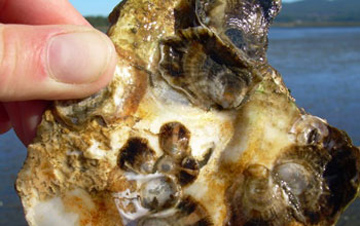The phrase “oysters on the half shell” may take on a whole new meaning in the years ahead. The oceans are getting more acidic, making it harder for oysters and other creatures to make their shells. In fact, it’s already happening.

The level of acidity is going up because the amount of carbon dioxide in the atmosphere is going up. The oceans absorb some of the CO2. That’s made the water about 30 percent more acidic overall than it was a couple of centuries ago. That increase is damaging coral reefs, and making it tougher for shellfish to create their shells.
A laboratory study a few years ago found that young Olympia oysters reared in highly acidic water grew at a slower rate than those in water with low levels of acidity.
And more recently, another study found that young oysters grown in a hatchery were suffering the same fate. The hatchery, in Oregon, raised young oysters for sale to other companies. But a few years ago the number of oysters began to decline. The hatchery asked marine scientists to find out why.
Researchers concluded that the cause was the increase in acidity. The young oysters were growing at a slower-than-usual rate, especially during their first 24 hours of life, when they begin building their shells. Many of the oysters died, while many of the survivors were too small.
The hatchery now processes the water to reduce the acidity. But that’s not an option for the oysters that live in the wild

